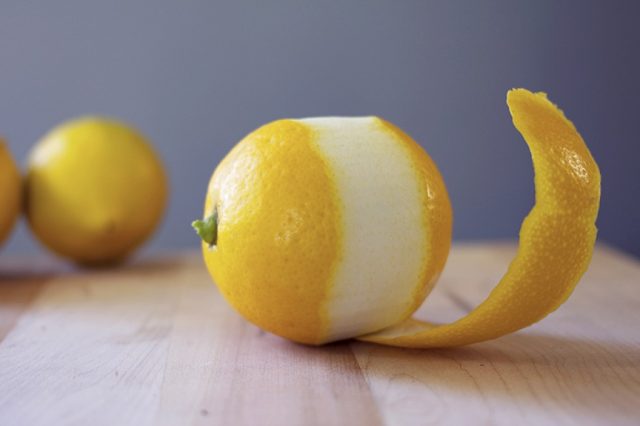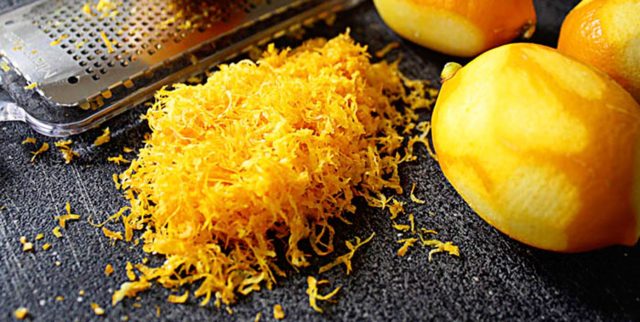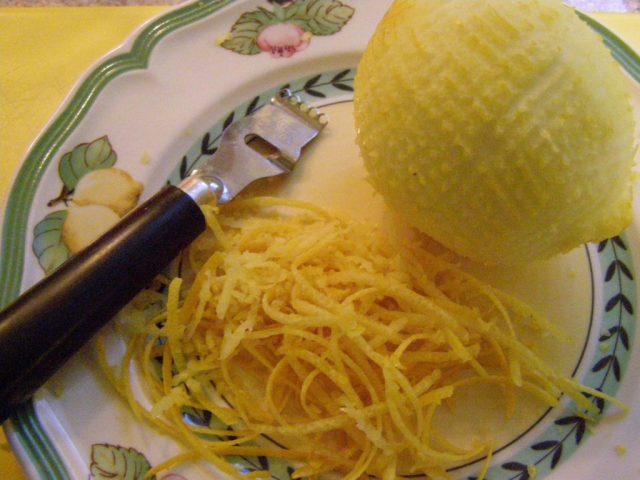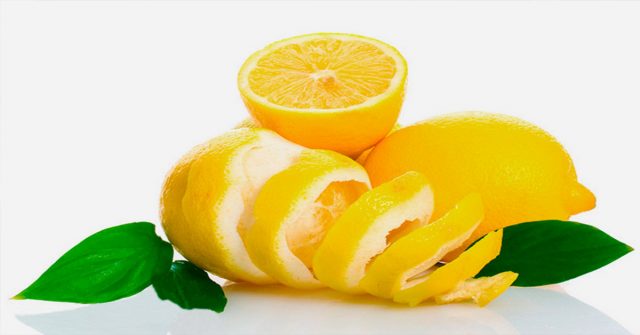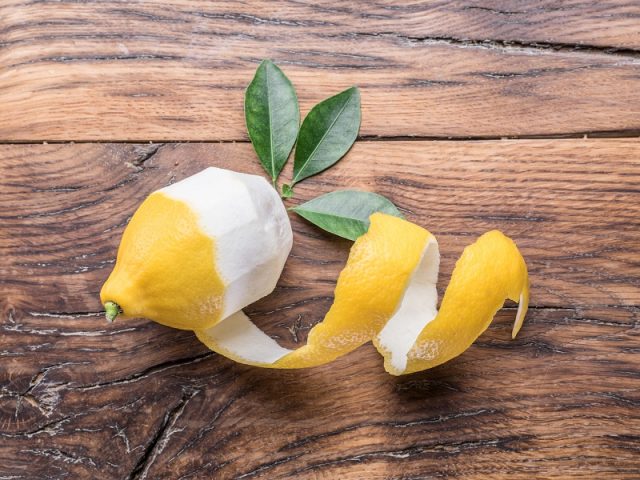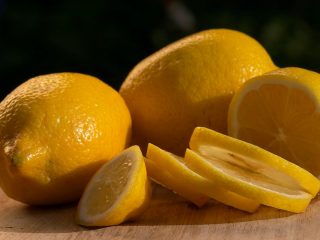Content
Lemon zest is a well-known phrase for culinary enthusiasts. Lovers of tea, household tricks or traditional medicine know about the peel. It is important to know its amazing properties and scope.
What is lemon zest
Lemon zest refers to a portion of the rind of a lemon. This is a yellow layer, which is removed by various methods, crushed, used in cooking, folk medicine.
In a broad sense, it is the peel of a lemon. However, the white layer gives a strong bitterness, so the concept of "citrus zest" and "rind" is shared when it comes to lemons, oranges, tangerines, grapefruits and similar fruits. It is believed that the zest is more beneficial than the pulp of the fruit.
Composition and nutritional value of lemon peel
The health benefits and harms of lemon peel are explained by the composition of the product, nutritional value. The main elements of the composition of the zest:
- zinc;
- copper;
- sodium;
- iron;
- beta carotene;
- potassium;
- folic acid;
- phosphorus;
- calcium;
- magnesium;
- selenium;
- vitamin C;
- B vitamins;
- vitamin A;
- vitamin E;
- essential oil.
Due to its rich active composition, drinking tea with unpeeled lemon is healthier than with peeled fruit. Gaining weight or disrupting your diet with lemon peel is impossible. Nutritional value of 100 g lemon zest:
- fats - 0.3 g;
- proteins - 1.5 g;
- carbohydrates - 5.4 g.
- calories - 47 kcal.
If the purchased fruit is not thoroughly washed before use, various chemicals that have treated the lemon will be added to the composition. Some people think that it is impossible to wash off even some of the chemicals. Of course, there will be no harm just from home-grown lemon. However, there is no exact confirmation of this.
The benefits and harms of lemon peel
The benefits and harms of lemon peel will appear with any method of using the product. Main beneficial properties:
- prevention of oncological diseases;
- prevention of heart disease, blood vessels;
- lightening the skin;
- regulation of the sebaceous glands;
- lowering cholesterol levels;
- prevention of blood clots;
- pressure regulation;
- increased immunity;
- strengthening of the skeletal system;
- prevention of oral diseases;
- improving digestion;
- constipation treatment;
- help with losing weight;
- normalization of blood glucose levels.
The beneficial properties do not apply in cases where all parts of the lemon are contraindicated or the potential harm from eating outweighs the benefits. Among the harmful properties, the following are distinguished:
- an allergic reaction - rash, swelling and other manifestations;
- infection with exotic diseases when the fruit is not washed well enough;
- exacerbation of chronic diseases when used contrary to contraindications;
- poisoning with chemicals, if the zest was removed from a dirty purchased lemon.
The skin of home-grown lemon is not used only if there are contraindications.
Contraindications to taking lemon peel
A person will feel the harm of lemon peel if he uses the product, despite the existing contraindications. Cannot be used in the presence of the following diseases and conditions:
- Heartburn.
- Gastritis.
- Stomach ulcer.
- Inflammation of the small intestine.
- Oral ulcers.
- Increased acidity.
How to peel lemon
There are 3 methods for peeling the zest.
- Grater. Take an ordinary kitchen grater, the finest. Apply a piece of foil, the prongs should pierce the surface. Rub the lemon rind. Only the yellow part should be removed. After the entire layer is removed, the foil is carefully removed, the zest remains on it.
- Knife or vegetable peeler. From the washed lemon, the zest is cut off in a thin layer like a potato peel. It is important to make sure that the minimum of the white layer is removed.
- Special knife for the zest. The device removes thin shavings, it is very easy to use - just scrape the peel.
In addition, there is a method of removing with a grater without foil, cutting off the entire peel with a knife, and some try to peel a lemon in the same way as an orange.
Applying lemon peels
Due to the benefits for the body, lemon peel is used by households when preparing food, for home cosmetics, when eliminating minor household difficulties.
In cooking
Experienced chefs know the benefits and harms of lemon peels. The dishes are seasoned:
- candied zest;
- frozen peel;
- dry powder.
Candied is made by mixing chopped fresh zest with granulated sugar, you will need 1 part of the zest, 2 parts of sugar.
Freeze with juice. The product is mixed with the juice of the peeled fruit, placed in molds, placed in the freezer.
To obtain the powder, you only need to grind the dried citrus skin. All types of spices are allowed to be added to:
- sauces;
- drinks (tea, coffee, cocktails);
- desserts;
- baked goods;
- puddings;
- meat;
- vegetable dishes;
- jellied meat, jellies;
- fish.
In cosmetology
The benefits of lemon peel are separately disclosed in homemade cosmetics.
- Scrub. They do it in two ways. The first is to mix sugar, olive oil, crushed zest. The second is added to handmade soap. The more zest is added, the higher the scrubbing qualities of the finished soap.
- Moisturizing the skin of the elbow. The overdried area is regularly rubbed with fresh lemon skin. The same method is recommended for the heels. An alternative method is to mix the zest, soda, a little water, rub into the elbow, heel. It is assumed that the skin will become softer, softer.
- Whitening of the skin of the feet. The sole, toes, and the upper part are rubbed. It is allowed to hold it for a short time and then rinse it off. It is permissible to use a grated skin moistened with water.
- Acne mask. You need to mix cucumber juice, sugar, peel. The mixture is applied to the face, washed off after 15 minutes with water.
Some advise rubbing the skin with a fresh crust. It is believed that it is so bleached, rejuvenated, smoothed, acne eliminated.
At home
The benefits of lemon peel extend beyond just your health. Household problems are also solved by lemon peel.
- Easily eliminate fridge odor. It is enough to put a lemon peel on each shelf.
- Microwave cleaning without cleaning agents. Put a bowl of water inside, lemon peelings. Boil for 5 minutes. The container is removed, the oven is wiped with an ordinary rag.
- The zest will help clean copper, brass products. Mix sea salt, lemon powder, rub the right place, rinse.
- To remove limescale from chrome surfaces, rub them regularly with lemon peel.
- Lemon vinegar will remove greasy stains. The composition is prepared as follows: for 2 weeks, the skin is poured with vinegar, after the agreed period, it is filtered, the vinegar is diluted with water (1: 1).
- Putting pieces of peel near doors, windows, cracks, you can scare away insects.
Lemon peel is useful for removing tea and coffee stains from dishes. It is believed that you need to moisten lemon powder with water, apply on the stain, leave for 2-3 hours, rinse with water. However, any soapy sponge can wash away dark stains, and regular washing of the cups does not form stains.
How to dry lemon zest
Lemon peel will not be beneficial if dried properly. Some dry in the oven, in the sun, or for more than 4 days. These are the wrong methods. Cook correctly in the following way:
- Having removed a thin colored layer from a carefully washed lemon scalded with boiling water, spread the shavings on a porcelain, paper-covered dish.
- Keep away from direct sunlight for 3 days.
- Stir daily to dry evenly.
- The finished product can be removed immediately, or crushed into powder.
If dried at high temperature, in the sun, some of the aroma will be lost, fading occurs. This will lower the quality of the product and the benefits for the body of such lemon peel will be less.
How to store lemon zest
The benefits and harms of lemon peel depend no less on proper storage than on proper preparation.
- The zest should be stored in tightly closed glass (tin) jars in a dark place. The ideal shelf life is 1 year.
- Candied can be stored indefinitely, but in the refrigerator.
- Lemon peels can be stored in a paper bag for 1-2 months.
Do not store lemon zest:
- in rag bags, next to intensely smelling products for a long time;
- in tin, glass jars in the sun;
- on a tray, in cups, plates;
- in plastic bags.
Conclusion
Lemon zest is beneficial, although many do not know about it. It is only important to apply it correctly, taking into account individual contraindications.

